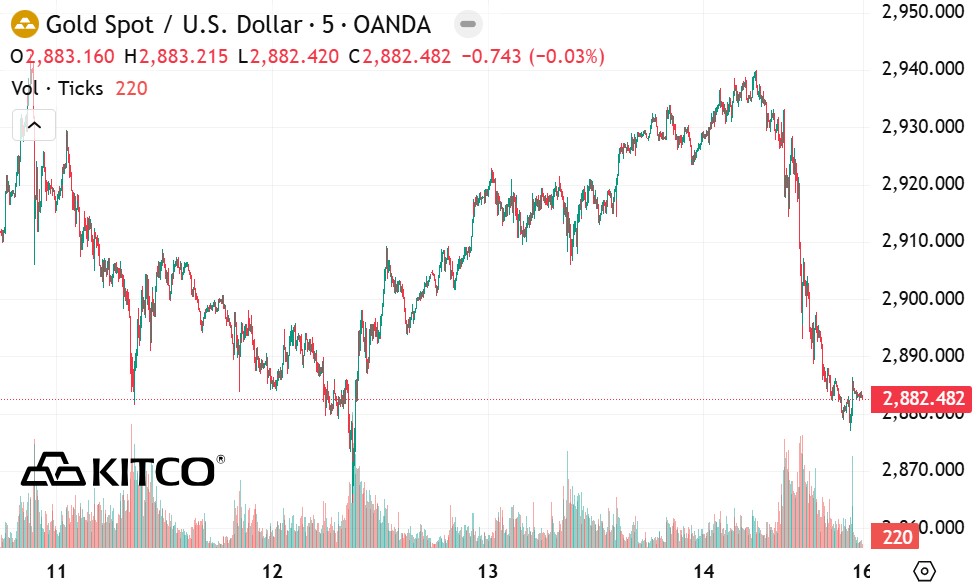According to Kitco, gold prices are struggling as US retail sales fell sharply in January. Weak consumer data shows increased risks for the US economy.
US retail sales fell sharply last month, down 0.9% after rising 0.7% in December (adjusted figures), according to the US Commerce Department's announcement on Friday.
The data was much weaker than economists had predicted, who had expected a decline of just 0.2%. Over the past 12 months, retail sales have increased by 4.2%, according to the report.
Core sales, excluding auto sales, fell 0.4% last month and also failed expectations. Economists expect a gain of 0.3%.
More disappointing news, the report shows that the control group - excluding sales from auto dealers, construction materials stores, gas stations and stationery stores - decreased by 0.8%, contrary to expectations of an increase of 0.3%. This index has a direct impact on US GDP.
The gold market was under selling pressure before the report was released and profit-taking activity increased immediately afterwards.

Economists said that retail sales figures were not a positive signal for the economy in the first quarter of the year.
Economists at Capital Economics said that the extreme cold spell covering North America in the second half of the month could be part of the reason for the decline in retail sales, especially the 1.3% decrease in the field of construction materials and gardening equipment - an industry heavily affected by weather. However, they say the weather is not the only factor, as sales at restaurants and bars are still up 0.9%.
Even if retail sales recover in February, the consumer growth rate in the first quarter of the year could only reach about 2.5% per year, causing GDP growth to decline to nearly 1.5%.
Retail sales data ended a disappointing week for US consumers, who are also facing rising prices. Some economists note that this economic data is putting the US Federal Reserve (FED) in a difficult position as it has to balance monetary policy between the risk of economic decline and persistent inflation.
However, according to commodity analysts, the current economic environment still creates favorable conditions for gold to promote its role as a safe haven asset, helping to protect against economic risks and escalating inflation.
Some experts explain that while the Fed remains neutral on monetary policy and keeps interest rates high, rising inflation makes bonds less attractive due to falling real yields. In this context, gold has become a more attractive defensive asset.
See more news related to gold prices HERE...











